

China's trade volume with the Shanghai Cooperation Organization (SCO) stood at 337 billion U.S. dollars in 2018, a rise of 47 billion U.S. dollars since 2013, with Russia and India emerging as Beijing's biggest trading partners within the Eurasian bloc, according to a recent study by the Shanghai Cooperation Organization United Center for Business Cooperation, a copy of which was provided exclusively to CGTN Digital.
At a time when China and U.S. are embroiled in a prolonged trade war, the study released during the SCO Summit in Bishkek that concluded on Friday, thoroughly examines Beijing's trade with other SCO countries while also highlighting the economic potential of the region that accounts for nearly half the global population and over 20 percent of the world's gross domestic product (GDP).
The SCO was founded in 2001 by China, Russia, Kyrgyzstan, Kazakhstan, Tajikistan and Uzbekistan and expanded its membership in 2017 by including India and Pakistan as full members. In addition, Afghanistan, Belarus, Iran and Mongolia have observer status while six other countries, namely Armenia, Azerbaijan, Cambodia, Nepal, Sri Lanka and Turkey are on board as dialogue partners.
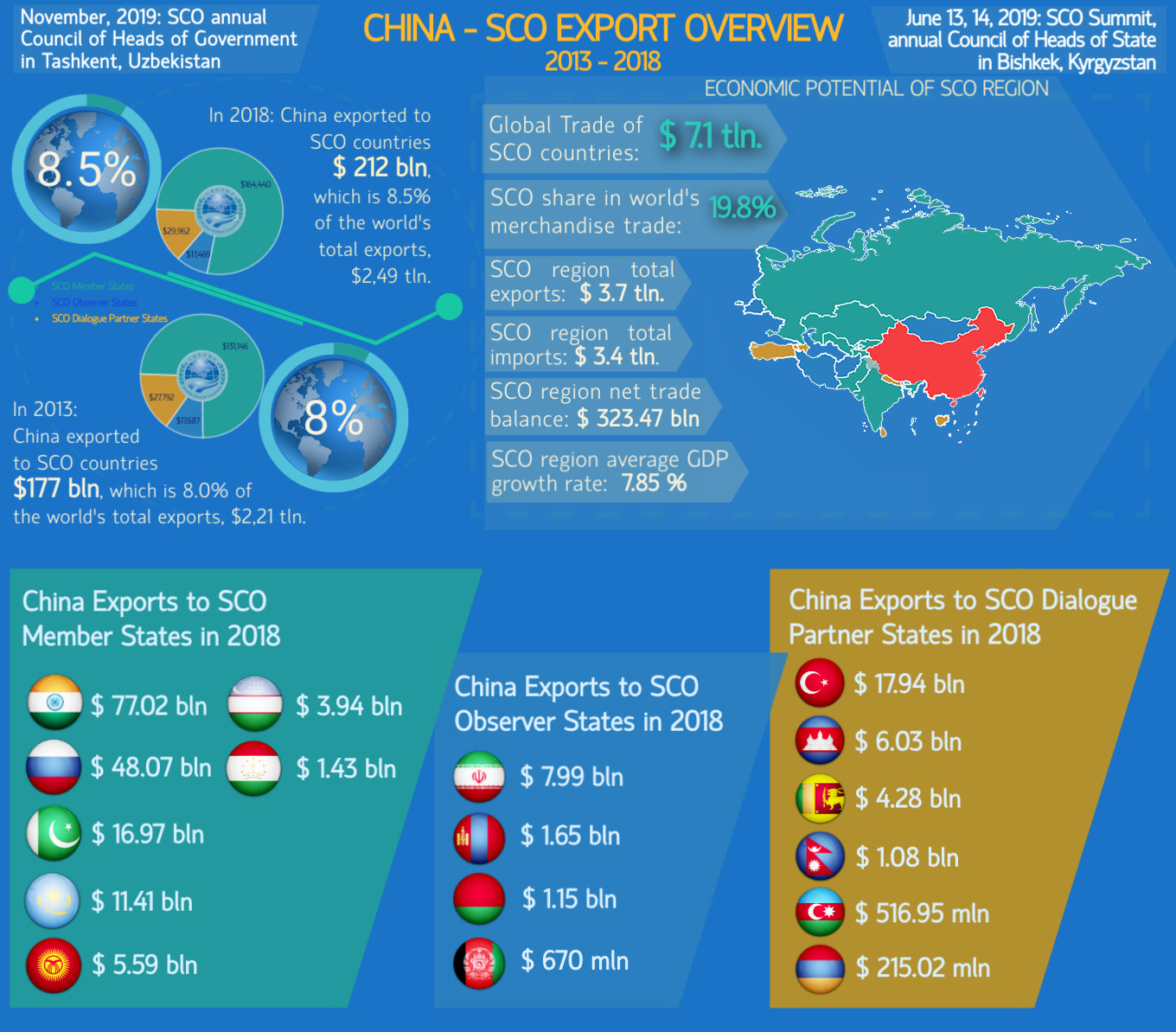
Infographics by SCO United Center for Business Cooperation
The U.S. remained China's biggest trading partner in 2018 with the total trade volume of almost 600 billion U.S. dollars, nearly double the China-SCO trade figures. However, with the ongoing bitter standoff between the world's two largest economies not showing signs of an immediate end, observers feel cooperation with SCO countries will be vital as China looks to increase its trade with other partners.
"China, one of the founding members of the SCO, will be pushing to deepen economic cooperation and integration between the countries of the region. With the upcoming 'trade and tech war' in mind, China understands that SCO will play a crucial role in the years to come as Beijing's need for import of agricultural products and the demand for new markets of technology sale will increase," Olim Alimov, Head of Beijing Office of the SCO United Center for Business Cooperation, told CGTN Digital.
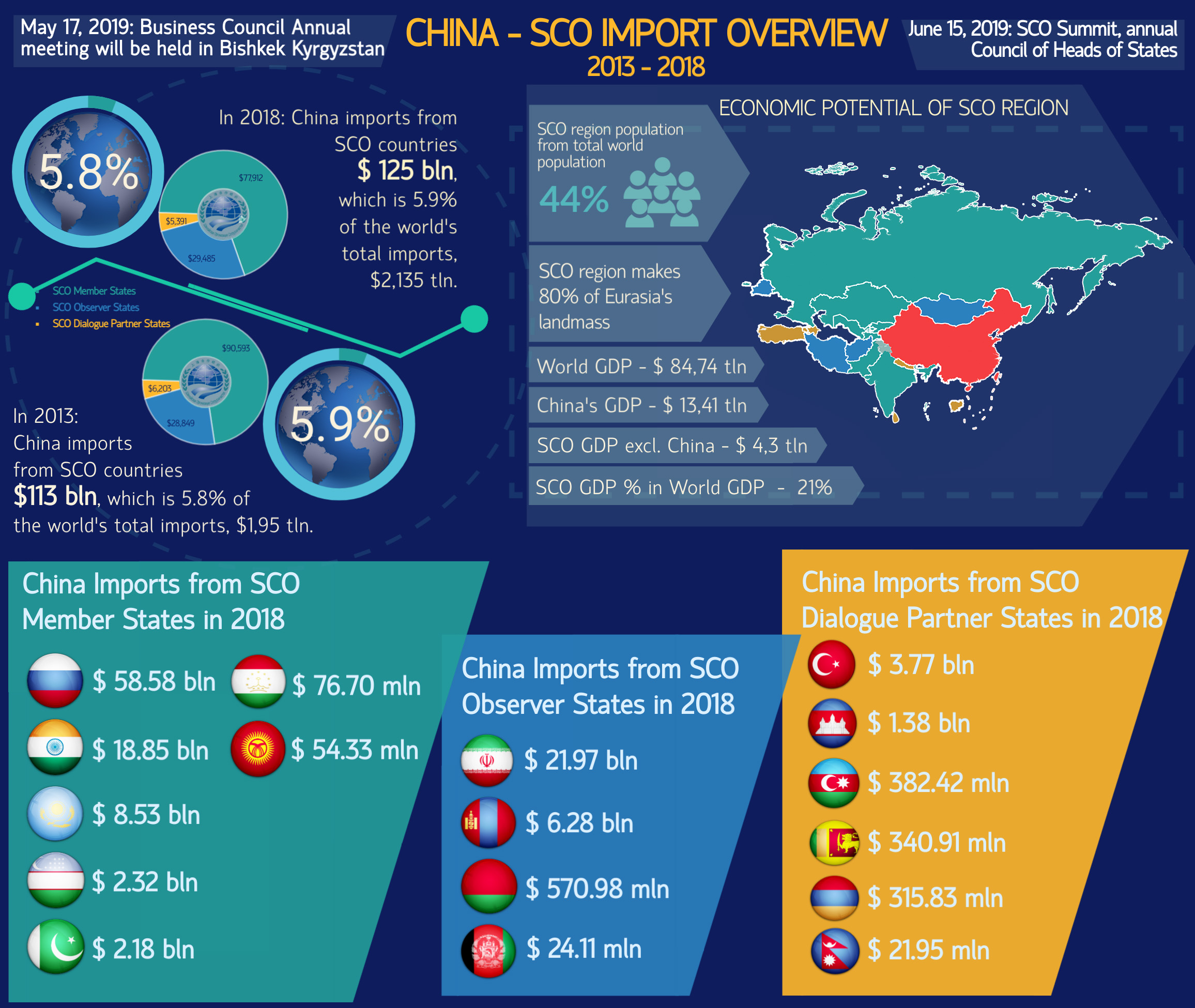
Infographics by SCO United Center for Business Cooperation
The SCO just held its 19th leadership summit in Bishkek, the capital of Kyrgyzstan on June 13-14 where Chinese President Xi Jinping called for a closer SCO community with shared future. The leaders also "emphasized their determination to step up efforts to consolidate the economic component of SCO activities and cooperation to jointly forge an open world economy," according to an SCO press release on Friday.
"The SCO region with its 18 countries comprises 44 percent of the population and 80 percent of the Eurasian landmass. The SCO region's total GDP amounts to 21 percent of global output and its overall trade constitutes 19,8 percent of global trade. However, last year China has only imported 5.9 percent of goods from SCO countries and exported 8.5 percent respectively. The potential and opportunities are immense," Alimov remarked.
Can SCO be the next economic marvel?
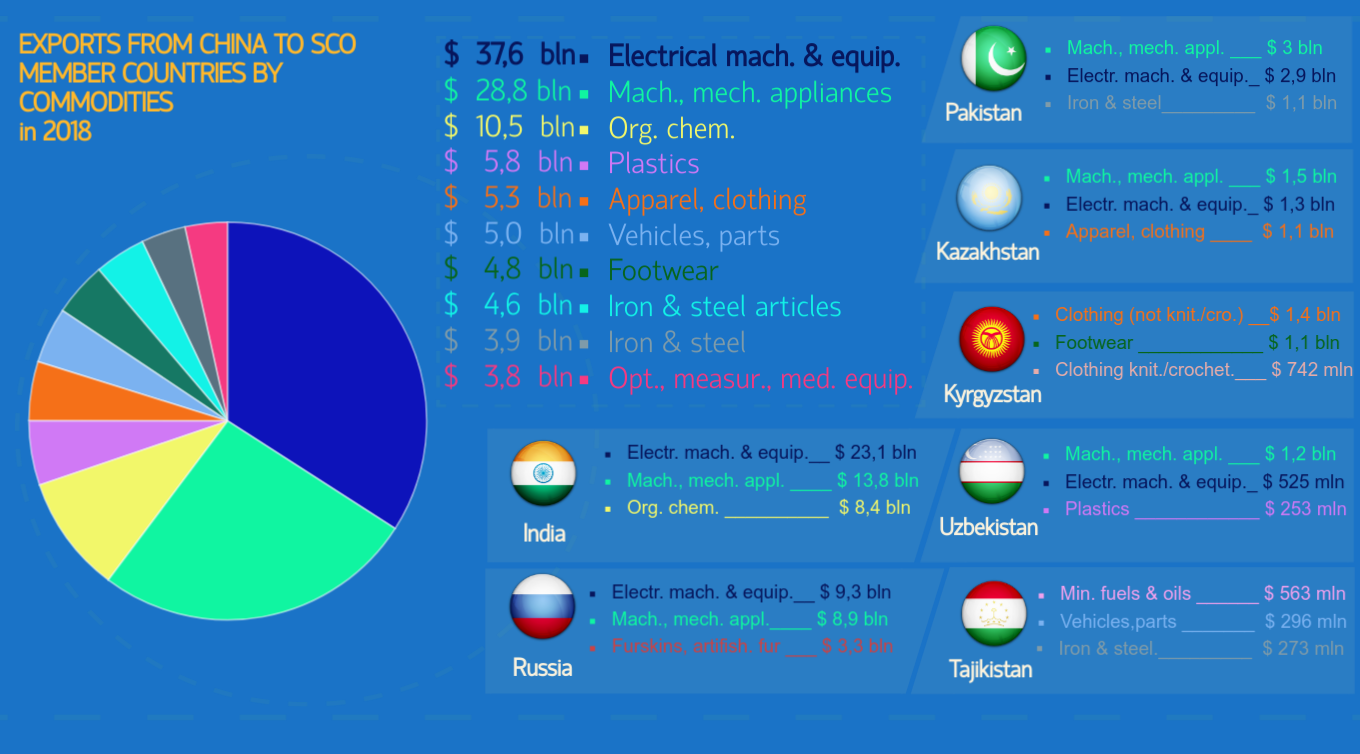
Infographics by SCO United Center for Business Cooperation
The SCO United Center study, through its two infographics, offers a detailed overview of China's imports and exports with all the other SCO countries based on official data from the International Monetary Fund (IMF) and China's Ministry of Commerce (MOFCOM).
China's total exports to SCO countries increased by more than 35 billion U.S. dollars in the past five years – from 177 billion U.S dollars in 2013 to 212 billion U.S. dollars in 2018; while Beijing's imports from these countries went up by 12 billion U.S. dollars – from 113 billion to 125 billion U.S. dollars – during the same period.
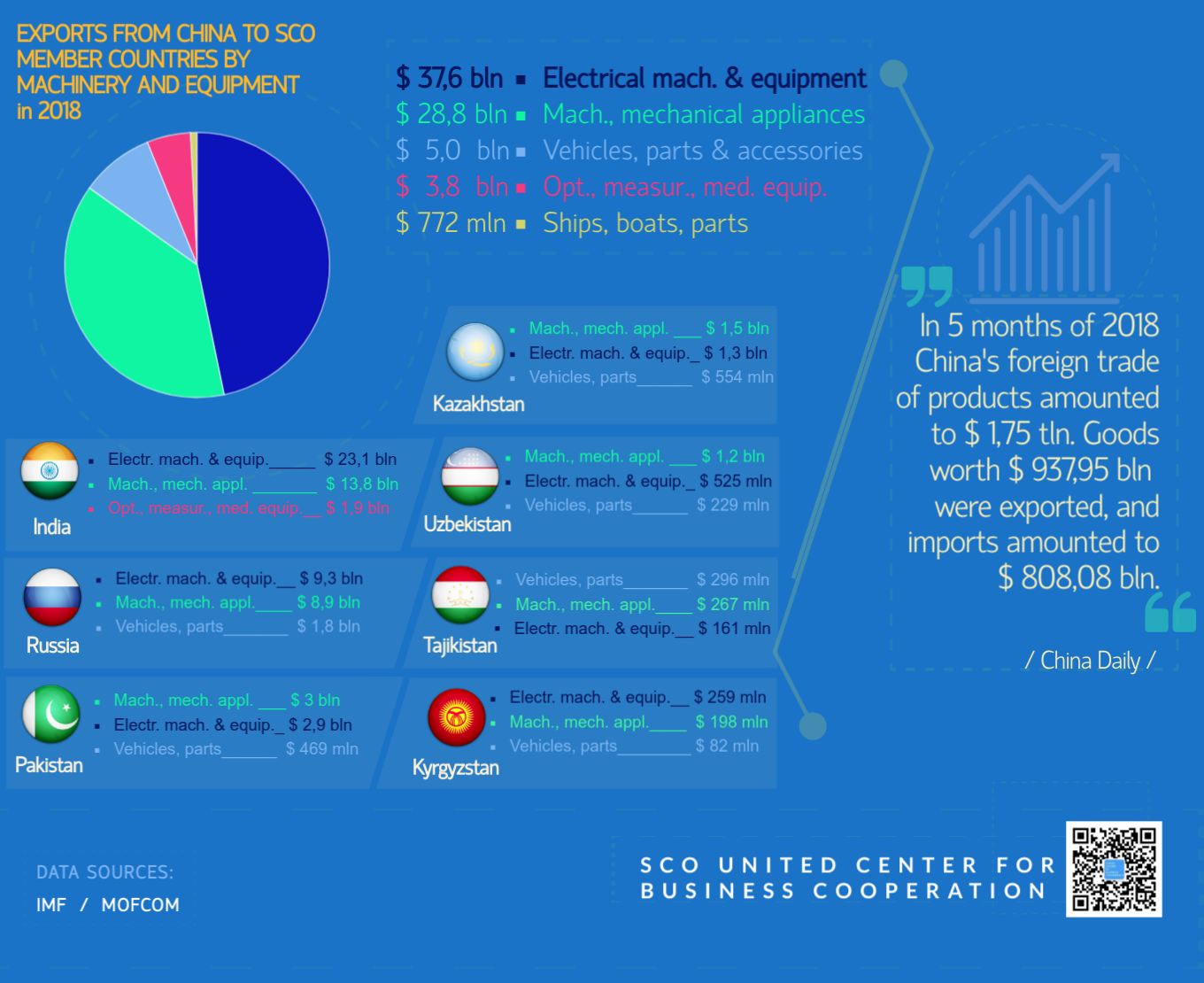
Infographics by SCO United Center for Business Cooperation
Russia and India accounted for over 60 percent of China's total trade within the SCO region with a collective trade volume pegged at 202.52 billion U.S. dollars in 2018.
India was the biggest destination (77.02 billion U.S. dollars) for Chinese exports and Russia stood second (48.07 billion U.S. dollars). Turkey (17.94 billion U.S. dollars), Pakistan (16.97 billion U.S. dollars) and Kazakhstan (11.41 billion U.S. dollars) comprised the top five SCO countries for Chinese exports.
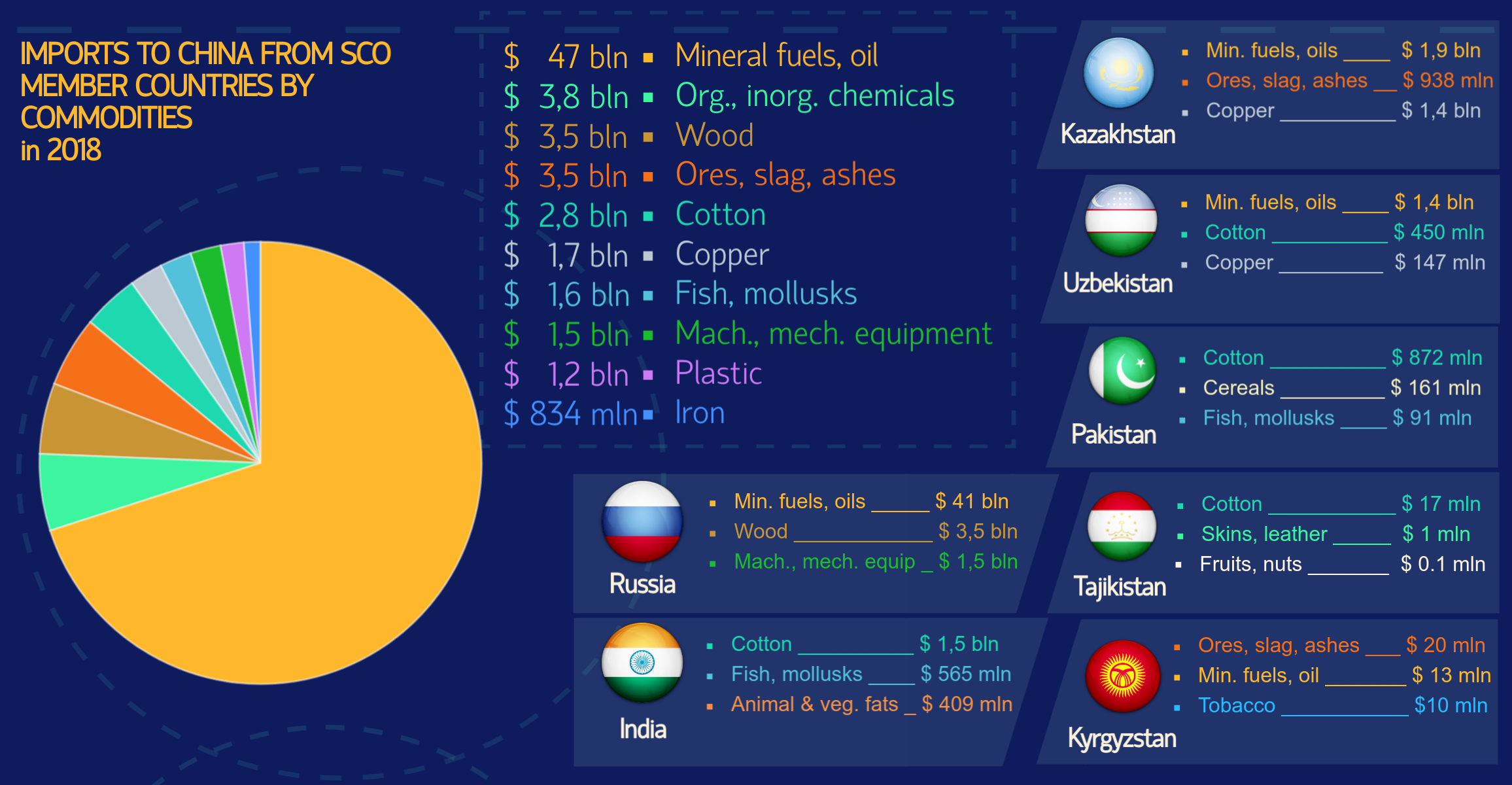
Infographics by SCO United Center for Business Cooperation
Russia, meanwhile, was the biggest source (58.58 billion U.S. dollars) of imports to China within the SCO; while Iran (21.97 billion U.S. dollars), India (18.85 billion U.S. dollars), Kazakhstan (8.53 billion U.S. dollars) and Mongolia (6.28 billion) made the top five source countries for Chinese imports.
"We dug deep into the specifics, country by country, and found who is in the game vis-a-vis trade with China and who is missing the train," Alimov said, adding: "The SCO is a unique opportunity to become not only the bedrock for stability but an economic marvel if it can understand that it has all the mechanisms to take advantage of and navigate its course toward more comprehensive economic cooperation."
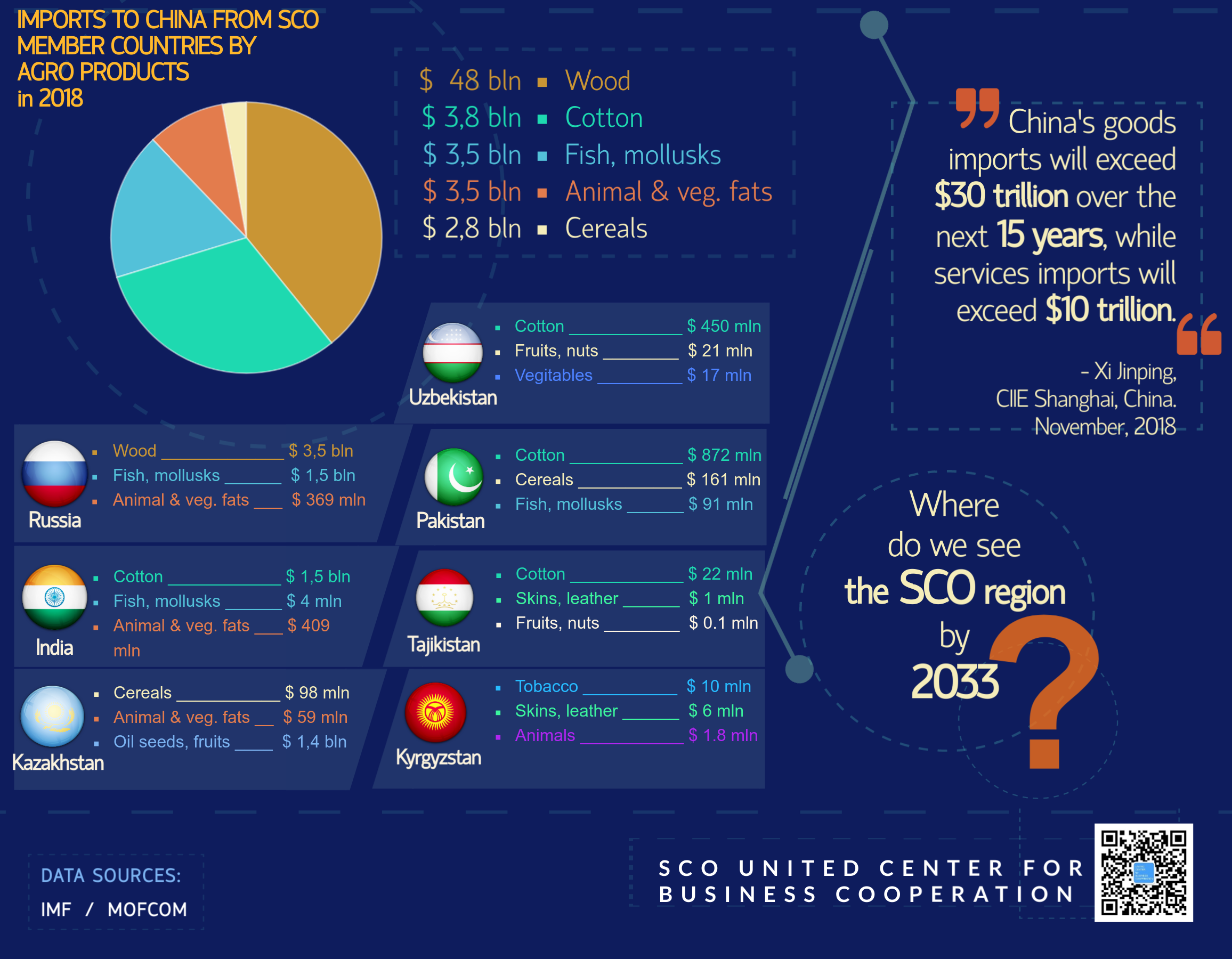
Infographics by SCO United Center for Business Cooperation
Alimov underscored that agriculture could be one sector that might see a significant impact from the ongoing China-U.S. trade war and therefore also provide substantial opportunities to other SCO countries to fill in the resulting gap.
"China is the biggest consumer market in the world with a growing middle class, which by some estimates has already reached 700 million people. Therefore, one of the biggest opportunities in the trade between China and other SCO countries is in the trade of agriculture products," he noted.
"China's growing need in soy beans, grains and green and eco-friendly goods amidst the growing trade war with the U.S. allows the SCO region to direct and tune its agricultural sector towards export to China," he added.

Copyright © 2018 CGTN. Beijing ICP prepared NO.16065310-3
Copyright © 2018 CGTN. Beijing ICP prepared NO.16065310-3